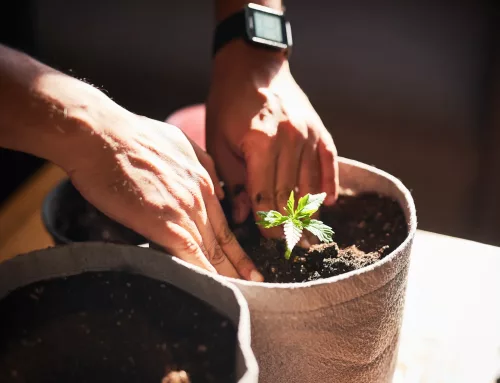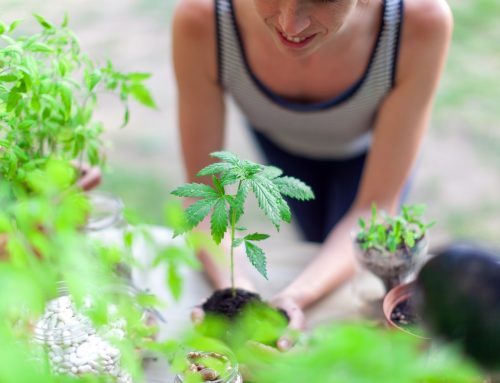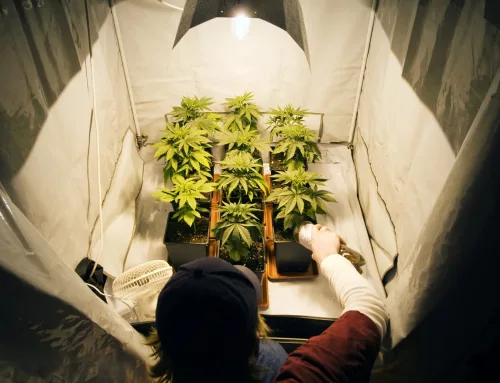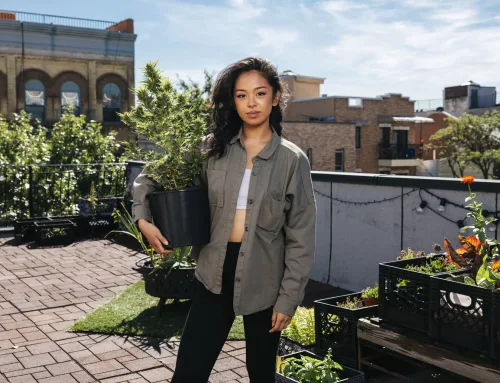Germination, the process of awakening a dormant seed to life, unfolds as a captivating yet intricate journey necessary to grow cannabis from seed to stem. Therefore understanding the various stages and nuances of germination can illuminate the crucial conditions necessary for fostering resilient, high-yielding cannabis plants.
Embarking on the process of growing cannabis plants from seeds requires careful consideration and a strategic approach to ensure a successful germination. In this guide, we’ll delve into Happy Valley Genetics’ proven process of germinating seeds, taking cues from our in-house team of cannabis breeding experts’ tried-and-true methods that can be successfully practiced at home.
Getting started with germinating cannabis seeds
Achieving successful cannabis seed germination hinges on the meticulous selection of a sterile substrate. While wet paper towels are a widely used method, their effectiveness depends on daily water changes and regular seed repositioning to prevent rooting into the towel. In such cases, you may want to transition seeds into the substrate once the protective shell is broken.
It is also paramount to refrain from directly placing seeds into contaminated soil or any dirty biological medium due to potential pathogen risks. Instead, our go-to sterile substrates are coco or rock wool cubes, chosen for their reliability in promoting a healthy cannabis germination environment. Utilizing these substrates within a clone dome with a tray provides an added layer of protection.
Importance of substrate selection
The primary concern when germinating cannabis seeds directly into a substrate, particularly one with organic matter, revolves around the risk of damping-off, a common issue in traditional soils. This threat is heightened during the seed’s initial stages when it lacks immunity, typically the first 4-5 days of its life.
The danger lies in the possibility of a single pythium or fusarium spore causing the demise of a vulnerable seedling. Often, seeds germinate below the soil only to succumb to microbial failure or, if they manage to sprout, die before producing leaves due to these pervasive pathogens. This underscores the importance of choosing a sterile substrate to safeguard the delicate early stages of cannabis seed development.
Best way to germinate cannabis seeds
Happy Valley Genetics’ suggested process involves first rinsing seeds with 3% H2O2 for 30-60 seconds and then placing them in sterilized reverse osmosis water to soak for 24 hours. Next, you will carefully place each seed in rock wool cubes and lightly cover them with the torn corners of the cube, ensuring the seed is barely below the surface to allow for easy monitoring and adjustment of the taproot. The cubes are then placed in a clone dome for 2-3 days, allowing the roots to strengthen before transplanting.
Germination steps at a glance:
- Soak seeds for 24 hours
- Place seeds in rock wool cubes
- Move seeds to clone dome for 2-3 days
- Transplant seedlings to a larger container
Tips for germinating autoflower seeds
The best way to germinate autoflowering cannabis seeds is to take extra care to avoid breaking the taproot, which can significantly impact plant growth and yields. Whether you’re growing autoflowers or photoperiod plants, using new, sterile cubes, rooters, and trays is paramount.
Transplanting cannabis seedlings
The timeline for transplanting seedlings varies based on the plant type. Autoflower seedlings should be transplanted into their final pots within a week or less of sprouting cannabis seeds, while photoperiod plant seedlings can spend up to three weeks in rock wool cubes. You can also support seedlings by misting the shell if it struggles to shed it, ensuring a moist environment facilitates a smoother process.
Best temperature for germinating cannabis seeds
Maintaining temperatures above 70ºF during germination is crucial to the health of seedlings. Our team has a propagation space with the ideal environment for germinating seeds, but anyone can recreate these conditions using a dome and maintaining ambient temperatures between 74-78ºF, with dome temperatures nearing around 88-90ºF. If you are not using domes, heat mats are recommended in cooler conditions, though they are not necessary if the room seedlings are germinating in remains consistently warm.
Water temperature can also impact the success of your seedlings’ growth. Ensuring water remains between 70-75ºF supports optimal germination. We have found that the ideal temperature for the fastest germination is in the mid 70s, as water temperatures approach or exceed 80ºF the dangers of unwanted pathogens increases.
Lights for cannabis seedlings
Cannabis seedlings can handle a lot of light, but when starting cannabis seeds during their first 3-4 days, they prefer ambient, secondary lighting. This can include LED lights designed for propagation, T5 fluorescent lighting, or any low intensity horticulture fixture. As the seedlings root and grow, they can progressively handle more light and by the time they are 3-4 weeks old, they can be exposed to 300-600 umol. Our team recommends utilizing a PAR meter to make sure light intensity increases incrementally over four weeks, reaching full vegetative light levels by week two. Noting that seedlings showing signs of over-stretching may indicate a need for more light, which can be easily remedied.
Humidity management
During the initial 24-48 hours, maintain near 100% humidity for your seeds. After transplanting, higher humidity levels in the room are beneficial, especially during the first week, with a particular emphasis on the initial 72 hours. Elevated humidity aids in plant feeding while the roots search for moisture. It’s essential to strike a balance, preventing over-watering of the rhizosphere, and ensuring the medium is adequately aerated to optimize root growth.
Some cannabis plants can also benefit from highly aerated substrates in cloth or aerated pots, promoting maximum rooting within their rooting window. Noting that highly aerated substrates that are ~30% perlite have the potential to yield cannabis plants that are twice as large as plants in dense soil, due to the expedited root growth, when properly irrigated.
Germinate cannabis seeds at home
Mastering the art of seed germination is a key milestone in successful cultivation, but the quality of the seeds you sow can have a major impact on your home grow. Making it critical to consider using high-quality feminized autoflower or photoperiod seeds from a breeder that offers a germination guarantee, such as Happy Valley Genetics, to ensure your popped seeds result in a successful crop from start to finish.
By adopting our professional-approved approach and paying attention to substrate selection, sterilization, and environmental conditions, you’ll set the stage for healthy seedlings and robust plant growth with the right seeds.
START YOUR GERMINATION JOURNEY TODAY
Explore Feminized Autoflower and Photoperiod Seeds
by Happy Valley Genetics today.




